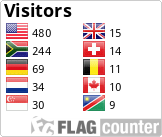
In early geological times, there existed a supercontinent that incorporated almost all the landmasses on Earth. It was called Pangea. Pangea was surrounded by a global ocean called Panthalassa.
The supercontinent began to break apart about 200 million years ago, during the Early Jurassic Period (201 million to 174 million years ago), forming the northern continents of North America and Eurasia called Laurasia, and the southern continents of Antarctica, India, South America, Australia and Africa, called Gondwanaland.

Gondwana was an ancient supercontinent that broke up about 180 million years ago. The continent eventually split into landmasses we recognize today: Africa, South America, Australia, Antarctica, the Indian subcontinent and the Arabian Peninsula.
This was when South Africa got a coastline for the first time.

Just here, next to the exquisite Knysna Lagoon, where the N2 passes really close to the mountain, you will find the Enon formation.

(Oudshoorn Enon formations)
The Enon Formations are conglomerates (a coarse-grained sedimentary rock composed of rounded fragments embedded in a matrix of cementing material such as silica) and other deposits brought down from the mountains when Gondwana broke up.
The Enon formation was initially laid down by rivers but then reworked on the shore.
Enon formations consists of reddish-brown course-grained conglomerate containing pebbles, cobbles and boulders, typically of quartzite and other hard rocks. The sandy bands are basically beach.
Recognition: David Mourant
References:
wikipedia.org/wiki/Enon_Formation; google.co.za/webhp?sourceid=chrome-instant&ion=1&espv=2&ie=UTF-8#q=Pangea
wikipedia.org/wiki/Gondwana
To be able to log this earthcache, please answer these questions and send the answers to us.
- Identify and count the various bands (layers) and describe them regarding colour and texture?
- In your opinion, what would’ve caused the very distinctive colouring in some of the bands?
- Please send us a nice photo of yourself against the backdrop of the Enon formation, although this is optional. (Please don’t add any of these photos, which would be serious spoilers, to your logs.)
